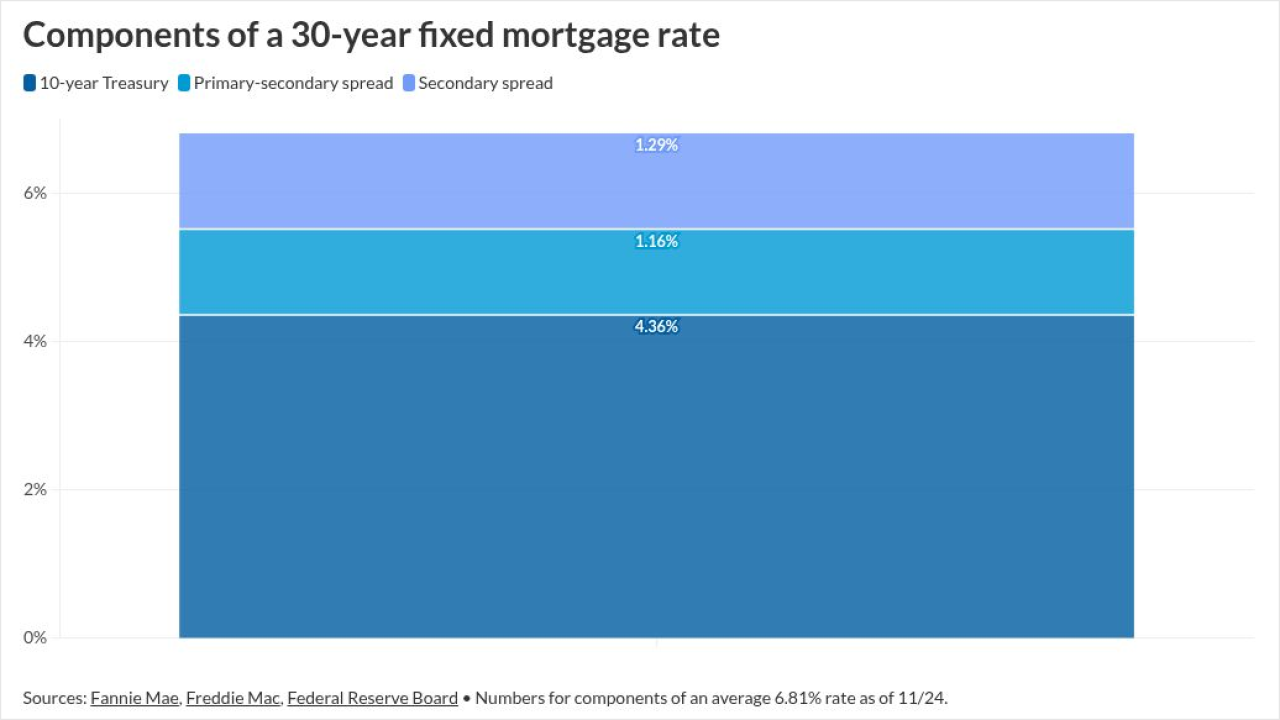Mortgage lenders that have sustained staggering profits over the past two years are facing a tougher outlook ahead. Rising interest rates, a tight housing supply and sky-high home prices are conspiring to crimp growth next year.
But just as lenders are lamenting the challenges of a rising-rate environment, the industry is pivoting to focus on diversity and inclusion. Reaching out to more minority borrowers is one way to grow market share but it also supports social justice issues that many banks and lenders
The change-up comes after years in which mortgage lenders have talked about the need to
"The reality of America shifting to becoming more a majority-minority creates a burning platform for us to say: Are we in these communities, are we caring for these communities?” Kristy Fercho, executive vice president and head of Wells Fargo home lending, said in an interview with American Banker. “The answer is no, when you look at the results.”
Fercho was sworn in as the Mortgage Bankers Association 2022 chair at the trade group’s annual conference held this week in San Diego, where lenders discussed how to deal with an expected 33% decline in overall mortgage lending next year to roughly $2.59 trillion.
“The population is changing — which we've been talking about for 15 years — and it would be a really smart financial decision to try to help a large segment of the population,” said Susan Stewart, outgoing chair of the MBA and chief executive of SWBC Mortgage, a nonbank lender in San Antonio. "The horrible George Floyd murder and everything that came after that was just another spotlight on the situation.”
Though interest rates are still near record lows, lenders are bracing for a slowdown and looking for ways to expand credit. Diversity has become the No. 1 theme to do so and is being pushed as never before by top industry officials.
Fercho is spearheading the MBA's campaign to promote minority homeownership and affordable rental housing. She is asking the MBA's 1,900 members to take a "Home for all Pledge," to promote greater racial equity and inclusion in housing and among the ranks of employees. Fercho currently oversees 25,000 sales, capital markets and servicing employees at Wells.

"The time is now for the industry to collaborate on developing policies and best practices to close the racial homeownership gap, remove the barriers to sustainable and affordable housing, and support strategies to increase diversity within our organizations," she told the audience of 3,200 at the conference.
The MBA said 73 companies, which include the largest banks, home lenders and independent mortgage bankers, have signed its pledge so far.
The push comes as the market expects a big decline in refinances but a still-strong home purchase market. Purchase volume is expected to rise 9% to a new record of $1.73 trillion in 2022, but refinances are expected to drop 62% to $860 billion, due mostly to rising mortgage rates, according to the MBA's forecast. The MBA expects mortgage rates to rise to 3.1% by year-end and to 4% by the end of 2022.
Meanwhile, low- to moderate-income consumers could add up to $300 billion in mortgage volume, according to one
The industry also is embracing policy changes by the Federal Housing Finance Agency, which oversees Fannie Mae, Freddie Mac and the Department of Housing and Urban Development, that appear to be loosening credit requirements, to close both the homeownership and racial wealth gaps. So far the changes have been
“I think there's a limit to what we can do from an industry perspective alone,” said Tom Wind, executive vice president of consumer lending at U.S. Bank Home Mortgage. The $547.9 billion-asset U.S. Bancorp, in Minneapolis, has been working with community groups and others to increase borrower education and conduct more outreach.
Meanwhile the combination of rising rates and declining refinances has many lenders bracing for a period of consolidation and fierce competition. Some recall how the one-two punch of competition amid fast-rising home prices led to the Great Recession when many banks and now-defunct nonbank lenders steered many minority borrowers into predatory loans that caused properties to fall into foreclosure, resulting in economic blight.
Some worry that mortgage brokers and nonbank lenders will repeat some of the mistakes that led to the last downturn.
“We have a whole generation of [mortgage] bankers that over the last 12 years have never experienced rising rates,” said Tom Piercy, managing director and president of national enterprise business development at Incenter Mortgage Advisors, a Denver valuation and trading firm that specializes in mortgage servicing rights. “Almost everybody who was eligible to refinance has refinanced, and we're already seeing margin compression in certain origination channels where lenders aren't making as much money as they were."
Lenders are looking for ways to expand their market share amid fierce competition. Some are using alternative data in underwriting or are originating non-qualified mortgages that typically are priced at 250 basis points or more above the prime rate.
"Over the past 10 weeks, there has been a material surge in interest around non-QM products among mortgage bankers," said John Keratsis, President and CEO of Deephaven, a non-QM wholesale and correspondent lender. "The same originators who have not been selling non-agency loans now expect them to comprise a significant portion of their 2022 production."
There are also plenty of opportunities in certain products such as home equity lines of credit, as consumer seek to cash-out on the double-digit rise in home prices in many cities this past year.
But there are myriad challenges in the current market. Homebuyers generally prefer the process of getting a home loan to be easy and accessible with the use of a cell phone, an expectation that has been driven largely by Rocket Mortgage, the largest U.S. mortgage lender and unit of Detroit-based Rocket Cos.
But most companies now face the necessity of technology upgrades amid rising expenses, in an industry long considered a tech laggard.
The massive increase in home prices in the past year also has made it hard for first-time homebuyers to compete with all-cash buyers, Wind said. In addition, though policymakers want lenders to originate more small-dollar home loans, typically for homes priced between $100,000 and $250,000, doing so is not always profitable.
“If you’re talking about a $150,000 loan that costs $5,000 to originate,” Wind said, “we’re very much thinking about our cost structure ... and we’re looking at it in terms of investment and technology costs.”
Also, the market for non-QM loans has largely been untested since the Consumer Financial Protection Bureau under the Trump administration changed the definition of what qualifies as an ultrasafe loan with protection from legal liability. Loans priced at 150 basis points over prime get QM status, compared with the previous definition that capped a borrower’s debt-to-income at 43%. Still, Fannie Mae and Freddie Mac were long exempt from the CFPB's QM rule, making it tough to determine how borrowers will fare going forward under the new definition.
Some consumer advocates are concerned that lenders will make more high-cost loans that contradict the Dodd-Frank Act’s requirements that lenders make a good faith effort to determine that a borrower has the ability to repay.
Many lenders also are hoping, if not expecting, that the Biden administration will adopt policy changes that pry open the credit box of the government-sponsored enterprises to allow lenders to make more loans to less creditworthy borrowers. Executives said they are cognizant how subprime crisis in 2007 to 2008 tanked the economy.
“We have to deal with credit and I think there's real smart thinking about ways to do that in a sustainable manner,” said Stewart, the outgoing MBA chair. “Everybody uses [the word] ‘sustainable’ a lot because nobody wants to repeat the mistakes of the past.”




